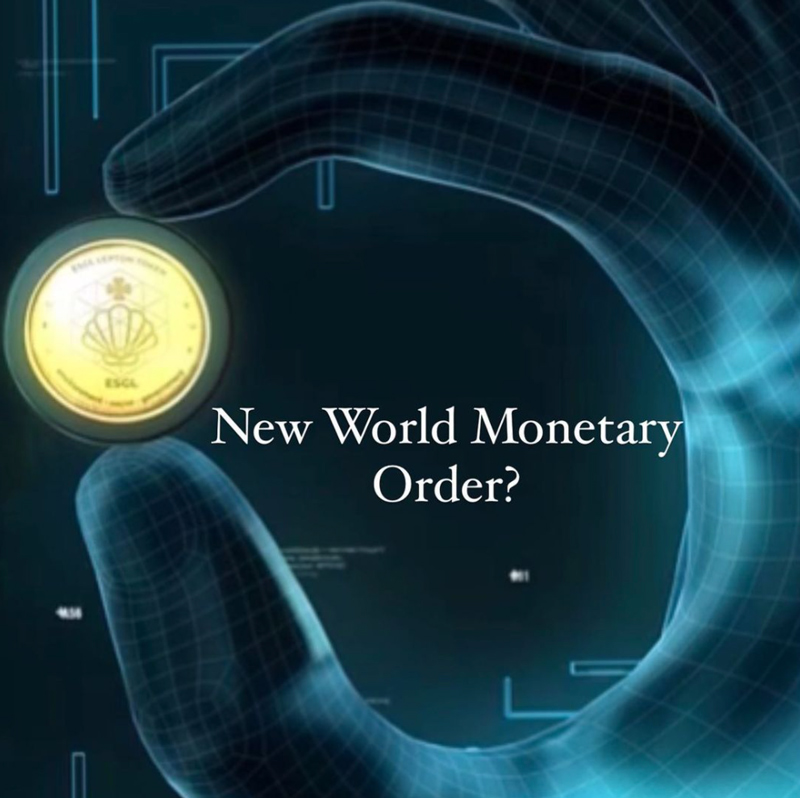In times of uncertainty it’s important to share information to launch a critical thinking process, become more inclusive and finally make a decision.
Today we’d like to share with you key takeaways from the report written by Credit Suisse short-term rate strategist Zoltan Pozsar, a former United States Federal Reserve and US Treasury Department official:
— We are witnessing the birth of Bretton Woods III – a new world (monetary) order cantered around commodity-based currencies in the East that will likely weaken the euro-dollar system and also contribute to inflationary forces in the West.
— A crisis of commodities is unfolding. Here commodities are collateral, and collateral is money, and this crisis is about the rising allure of outside money over inside money. Bretton Woods II was built on inside money, and its foundations crumbled a week ago when the G7 seized Russia’s FX reserves.
— Non-Russian commodities are more expensive due to the sanctions-driven supply shock that basically took Russian commodities “offline”. If you are a (leveraged) commodities trader, you need to borrow more from banks to buy commodities to move and sell them.
— What we are seeing at the 50-year anniversary of the 1973 OPEC supply shock is something similar but substantially worse – the 2022 Russia supply shock, which isn’t driven by the supplier but the consumer.
— The aggressor in the geopolitical arena is being punished by sanctions, and sanctions-driven commodity price moves threaten financial stability in the West. Is there enough collateral for margin? Is there enough credit for margin? What happens to commodities futures exchanges if players fail? Are CCPs bulletproof?
— The higher non-Russian commodity prices get and the lower Russian commodity prices fall, the wider FRA-OIS will get.
— Money has four prices:
(1) Par – which is the price of different types of money and which means that cash, deposits, and money fund shares should always trade 1:1.
(2) Interest – which is the price of future money and which refers to OIS and spreads around OIS across all possible money market segments.
(3) Exchange rate – the price of foreign money, i.e. US dollars vs. the rest.
(4) Price level – which is the price of commodities (all of the Russian, non-Russian stuff) and, via commodities, the price of everything else.
— Every crisis occurs at the intersection of funding and collateral markets and in the presently unfolding crisis, commodities are collateral, and more precisely, Russian commodities are like subprime collateral and all other stuff is prime.
— The pattern is concerning. It’s a buyers’ strike. Not a seller’s strike. Every crisis is about the core vs. the periphery, where someone, somehow must always provide a backstop – or an “outside spread”. If we are right, and if this is a “crisis of commodities” – a 2008 of sorts thematically, if not in terms of size or severity – who will provide the backstop? We see but only one entity: the PBoC!
— The idea behind going long shipping freight rates is simple: the price the PBoC will be paying to lease ships to fill them up with Russian commodities can in theory rise as much as the collapse in the price of Russian commodities: a lot. Renting boats is like renting balance sheet at a dealer to fund inventory,
— If China does not have enough storage capacity on the mainland, it will store Russian commodities on vessels floating on the seas, encumbering not balance sheet (the PBoC is funding all this by printing money) but shipping capacity, which, for the rest of the world, will also be inflationary.
— If you believe that the West can craft sanctions that maximise pain for Russia while minimising financial stability risks and price stability risks in the West, you could also believe in unicorns. When this crisis (and war) is over, the US dollar should be much weaker and, on the flipside, the renminbi much stronger, backed by a basket of commodities.
— From the Bretton Woods era (backed by gold bullion), to Bretton Woods II (backed by inside money, i.e. Treasuries with un-hedgeable confiscation risks), to Bretton Woods III (backed by outside money i.e. gold bullion and other commodities); After this war is over, “money” will never be the same again… …and Bitcoin (if it still exists then) will probably benefit from all this.


 Président de l'association
Président de l'association